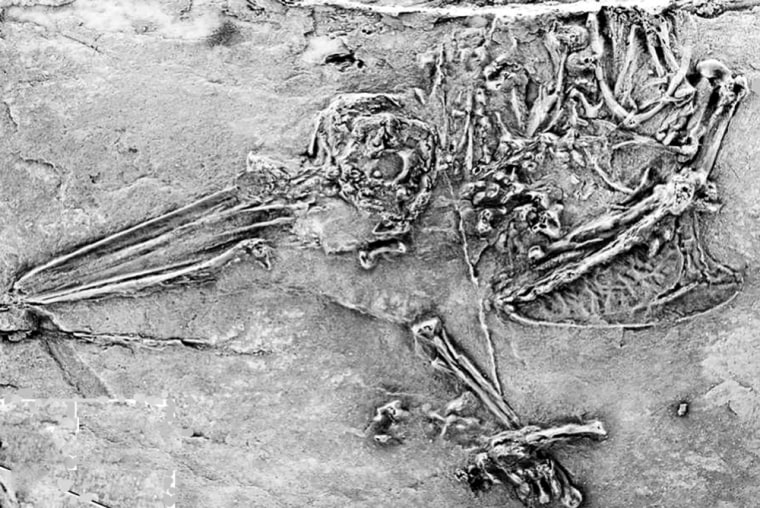More than 30 million years ago, birds resembling hummingbirds were savoring nectar in the flowers of Europe, a continent where these birds long ago disappeared.
Fossil remains of the rare birds have been identified from a site in Germany, extending the age of hummingbirds well back in time.
Gerald Mayr reports Friday in the journal Science that the tiny bones represent the first hummingbirdlike fossils ever found outside the Americas.
“It is the first definite record of a modern-type hummingbird found in the Old World,” he said.
Previously, the oldest known hummingbirds were dated 1 million to 2 million years ago, based on remains found in cave deposits in Central America, Mayr said.
The German skeletons, less than 2 inches (5 centimeters) long, were found in a clay deposit in the German state of Baden-Württemberg and were identified by Mayr at the Forschungsinstitut Senckenberg, a natural history museum in Frankfurt.
He named the new species Eurotrochilus inexpectatus, which means an “unexpected European version of Trochilus.” Trochilus is the name of a modern hummingbird genus.
'Beautiful specimen'
Helen James, an ornithologist at the Smithsonian’s National Museum of Natural History, said the group had been known previously, but researchers hadn’t had the skull and bill to study.
“It’s a beautiful specimen,” she said. “We know now, from this material, that the bird was hummingbirdlike in its bill form and certainly differs from the swift and other members of the order.”
Mayr said the find is a “striking example for the complexity of evolution and animal biogeography.”
“Hummingbirds hitherto were the textbook example for a New World radiation among birds. However, species that today are restricted to a certain region may have had a quite different or wider distribution in the past, with all its ecological implications. The find may further open a new view on the evolution of parts of the Old World flora,” he said.
Role in pollination
The birds had long, nectar-sucking beaks, more than twice as long as their skull, and wings designed for feeding while hovering. Some flowers still exist there that are adapted to be pollinated by such birds. Those duties have since been taken over by others, such as long-tongued bees.
James said that previously the material had been interpreted as either coming from an early experiment in hummingbirdlike ecology or from the stem group of modern hummingbirds, since the bones did show modifications that could have enabled hovering flight.
“That question is still unresolved,” she said, but the skulls do tell something that had not been known before.
